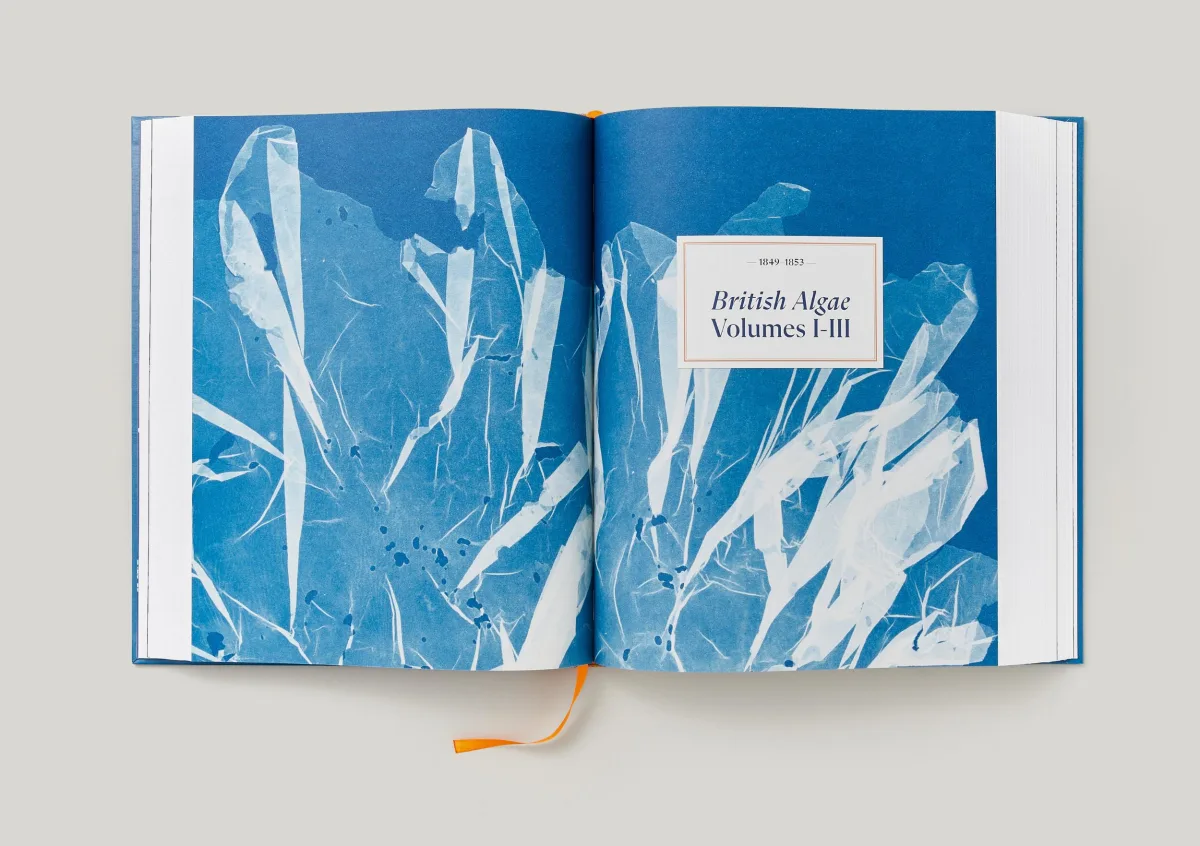Anna Atkins. Cyanotypes
125Edition: Multilingual (English, French, German)Availability: In Stock“Often replicated, seldom improved on, the elegant cyanotypes of Anna Atkins are timeless.”
“TASCHEN honors [Atkins’] achievement with a magnificent complete edition... A must.”
“The images of enigmatic beauty to which Anna Atkins dedicated her life [are] highlighted in a superb new book published by TASCHEN.”
“The cyanotypes appeal, today, partly for their restrained coolness, but they can be seductive too; the pictures delight us with their subtle intricacy or ravishing exuberance.”
“A remarkable testament to the skill, persistence and botanical passion of someone who had rare scientific opportunities for a woman of her time, and who made the most of them.”
“An immense work that is now being shown in its entirety for the first time. Cyanotypes presents Atkins' groundbreaking technology in a scientific and art historical context in order to honor the groundbreaking contributions of a true pioneer."
“Everything there is to know about Anna Atkins, pioneer of photography, is collected in this exquisite TASCHEN volume.”
“...[a] lavish large-format volume.”
“…a celebrated botanist and a pioneering photographer.”
“…reveals the ingenuity of Atkins.”
“These beautifully detailed images show the remarkable legacy of Anna Atkins, a 19th-century botanist who left her stamp on science and photography with her signature “cyanotype” prints.”
“…a luminous new edition.”
“Set against that bright Prussian blue background, like alabaster ballerinas of sun and light and frozen movement, Anna Atkins’ subjects still beguile like some botanical dance.”

Anna Atkins. Cyanotypes
125A female pioneer of early photography
A complete overview of Anna Atkin's photographic oeuvre
Although the cyanotype technique was discovered by her friend John Herschel, Atkins was the first to realize both its practical purpose for her own interests in botany and taxonomy, and its intriguing artistic potential. The process, which involved fixing the object on sensitized paper and exposing it directly to sunlight, results in the Prussian blue pigment that forms the unmistakeable backdrop to these artworks.
Atkins’ albums British Algae (1843–1853) and Cyanotypes of British and Foreign Ferns (1853), the latter of which was produced with her friend Anne Dixon, are works of remarkable rarity. Reprinted here in their entirety for the first time, they reveal her mastery of multiple disciplines: While the cyanotype process allowed Atkins to meet the challenges of accurate representation, the delicate contours of the specimens, set above the intense blue background, has lent the images a timeless aesthetic appeal.
This edition, drawing extensively from the copies of the New York Public Library and J. Paul Getty Museum, has carefully compiled cyanotypes from several sources to reprint Atkins’ seminal works in full. Over 550 cyanotype impressions are accompanied by a series of introductory essays from Peter Walther, placing Atkins’ work in its scientific and art-historical contexts and paying rightful tribute to the groundbreaking contributions of a female pioneer.
The author
Peter Walther has edited various publications on literary, photographic, and contemporary historical themes, including books on Goethe, Fontane, Thomas Mann, Hans Fallada, and writers in the First World War, as well as several illustrated books with historical color photographs. He is the author of the TASCHEN publications The First World War in Colour (2014), New Deal Photography. USA 1935–1943 (2016) and Anna Atkins. Cyanotypes (2023).
Anna Atkins. Cyanotypes
Hardcover in slipcase, 9.6 x 12.0 in., 7.63 lb, 660 pagesISBN 978-3-8365-9603-9
Edition: Multilingual (English, French, German)5























